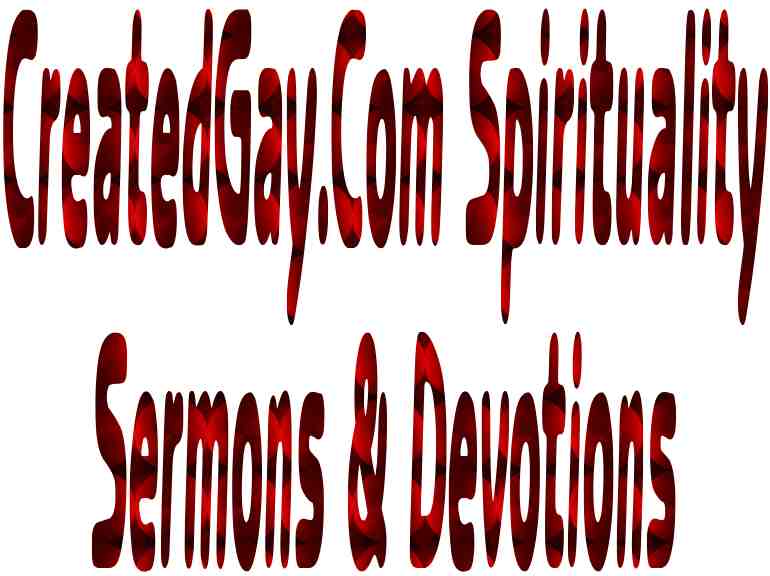Living Monument, Living Altar
The passage today is from Deuteronomy Chapter 27. The children of Israel were getting ready to enter the promised land. Once they were in the promised land, they were to build two things – a monument and an altar. There is meaning in this passage for those who are in Christ. To understand the meaning this text holds for those who are Christians, we need to reflect for a moment on what it means to Christians to be entering the promised land. In one small respect, we have entered into eternal life, have entered into the promised land now. John 17:3 (King James Version) And this is life eternal, that they might know thee the only true God, and Jesus Christ, whom thou hast sent.
The next time you are afraid God will cut you off, because you are gay, bisexual, or transgendered, remember this text. Eternal life is to know God and to know Jesus Christ. As a queer Christian, you have the assurance of salvation.
Returning to the passage we are studying today. Deuteronomy 27:2-8 (New Living Translation) When you cross the Jordan River and enter the land the LORD your God is giving you, set up some large stones and coat them with plaster. 3Then write all the terms of this law on them. I repeat, you will soon cross the river to enter the land the LORD your God is giving you, a land flowing with milk and honey, just as the LORD, the God of your ancestors, promised you.
4When you cross the Jordan, set up these stones at Mount Ebal and coat them with plaster, as I am commanding you today. 5Then build an altar there to the LORD your God, using natural stones. 6Do not shape the stones with an iron tool. On the altar you must offer burnt offerings to the LORD your God. 7Sacrifice peace offerings on it also, and feast there with great joy before the LORD your God. 8On the stones coated with plaster, you must clearly write all the terms of this law."
In this chapter, the children of Israel are instructed to build a monument and an altar. The monument has the law on it and the altar is a place to worship the Lord. This monument was to show that the people got the promised land by virtue of the law written on the stones.1
There is some thought the stones for the altar were not to be cut, so the people would not start to worship the altar.2 No iron tools were to be used when making the altar. The children of Israel did not have the ability to "work with iron" then. To have used iron tools, the children of Israel would need to have worked with other nations.3
Those who were not part of the children of Israel did not build the monument or the altar. A fitting monument and a fitting altar can only be constructed by those who have been brought out of slavery. And only those touched by God can be a living monument and a living altar. Nobody else has the testimony, so nobody else can be a living testimony.
This passage is a call to us inscribe in our lives the Word of God. The Words to be inscribed in our lives are words that show how we obtained eternal life through the Messiah. Those words are words of grace and love.
As a gay, bisexual, and transgendered people of the promised land, we are called to live in such a way that people see in our personal lives the grace of the God who saved us written on our hearts, shining through our eyes, moving through our feet, and reaching out through our hands.
The call goes beyond being a living testimony to God's relentless grace, a grace that hunts people down to extend eternal life. The call is to live our lives in such a way that we will be a living altar, a living invitation to people to offer a sacrifice of praise to the Lord!
And the good news is that our Lord is working a miracle in our lives. That miracle is changing us slowly into living monuments and living altars.
Notes:
1F.C. Cook, ed. Barnes Notes: The Bible Comentary, Exodus to Ruth. (Grand Rapids, Michigan: Baker Books, 1847), 320.
2Bruce Barton, et. al., eds. Life Application Study Bible: New Living Translation. (Wheaton, Illinois: Tyndale House Pub., 2004), 296.
3Barton, et. al., 296.
